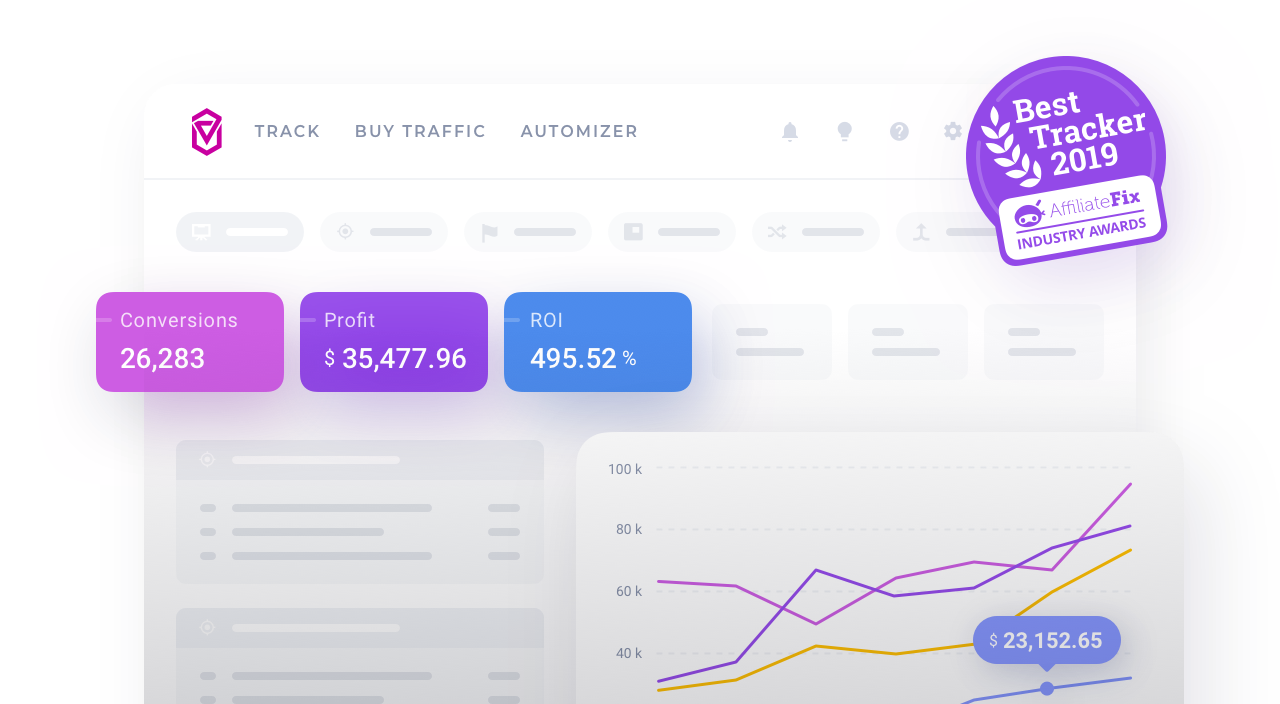Voluum and Ringba
Ringba and Voluum make it easy to track your inbound calls as conversions for your Voluum offers and report them back to Ringba for attribution.
Before you start
Before you start, make sure you have the following:
- An active Ringba account with some funds added or a verified credit card added.
- A Ringba campaign created with at least one Publisher. Make sure that the Capture User Data toggle is turned on.
- At least one active number.
- A web page that you can edit to add a tracking script and a CTA with a Ringba number. This will be your offer in Voluum.
- (Optional) Another web page that will be your lander in case you need to use direct tracking. You will then redirect from this page to the page with Ringba number. Alternatively, you can append custom JS script that will fetch the ClickID value from response to Voluum Offer tracking script and push it to Ringba tags.
- A campaign created in Voluum, with the web page that has Ringba number on it added as offer.
How It works
The way it works is as follows: When a user clicks a CTA button on an offer page, Ringba call tracking tag catches all parameters appended to the offer URL and stores them in its system. upon succesfull conversion, click ID parameter is then sent back from Ringba to Voluum. The latter platform registeres a conversion.
Set up Ringba and Voluum
I. Add the Ringba Call Tracking Tag to your webpage's header
- Navigate to the Campaign with your Publisher that you want to track with Voluum.
- Click Install Call Tracking Tag from the actions panel.

- Copy and paste the code snippet into your web page header. It should look something like the example below:

II. Capture click ID data
- Add a Voluum click ID token paired with any parameter name to the offer URL. Your offer URL should look like this:
https://offer.com?clickid={clickid} - In Ringba, navigate to Integrations and select URL Parameters.
- Click Create URL Parameter.

- Fill data like on the schreenshot below and then click Create. Note that creating a new URL Parameter will automatically create a relevant dynamic token, [tag:User:clickid], which can be used later in Voluum S2S postbacks.

- Go to your campaign , edit it and click the Add URL parameter.

- Click Select existing and then select the click ID parameter. Click Add.

Voluum Note: You can add multiple custom parameters to your Voluum Offer URL and all of them will be captured by Ringba in Tags.
III. Create Ringba Pixels for Voluum S2S Postback Events
In Ringba, you can create mutliple Pixels for triggering events you want to track in Voluum.
- Get Voluum postback from an offer page.
- Go to Integrations / Pixels and then click Create pixel.

- Paste the Voluum postback URL. Click the Token button and select USer / Clickid. This will add the click ID URL parameter that you created earlier. You can add additional parameters to the psotback URL.
cidfor ClickID.payoutfor conversion payout.txidfor transaction ID.etfor conversions type you would like to record in Voluum (requires creating Custom conversions in Voluum).param1-param5for any additional values you would like to record in Voluum.
If you are unsure if a particular token is relevant for the call type you want to report, review this list of Most Common Tokens in Ringba.
Example of full Voluum S2S Postback with custom parameters:
Please note that the above S2S postback is just an example. Ringba supports many dynamic tokens. Please take your time to think it over and select those which will be the best choice for your requirements.
Tracking Ringba calls with a direct campaign (for Google, or Facebook)
Google and Facebook prohibit user redirection, hence the only tracking method allowed on these platforms is a direct one. You have two ways of setting up a Ringba-integrated campaign with these sources:
- Use a landing page, where you will use a direct method from an ad to lander and then a redirect method from a lander to an offer. This way Ringba will catch the Voluum click ID data from an offer URL, as it was described above.
- Go with Offer only. In this scenario, you will have to include a DTP callback script on your offer page. The script will get the click ID value and push it to Ringba.
Set up a direct offer only campaign.
In such a case it is necessary to implement the below code snippet to the Offer page’s <body> where the CTA button is located:
<script>
function pushTag() {
var VLM = dtpCallback.getClickID();
(window._rgba_tags = (window._rgba_tags || [])).push({type: "user", clickid: VLM});}
pushTag();
</script>
Voluum Note: Make sure that you paste that code block at the bottom of the <body> section of the web page, so it will launch after the direct tracking script.
The script creates a variable called VLM by retrieving Voluum ClickID from the dtp Callback (response to the Offer tracking script). Then pushes its value into Ringba Tracking Tags under the value “clickid”.
Once the call is done, Ringba triggers a postback back to VLM and saves the clickid value inside its reports.
The other parts of the setup, including adding the Ringba Call Tracking Tag in the web page’s <head>, remain exactly the same as for Redirect campaigns.


